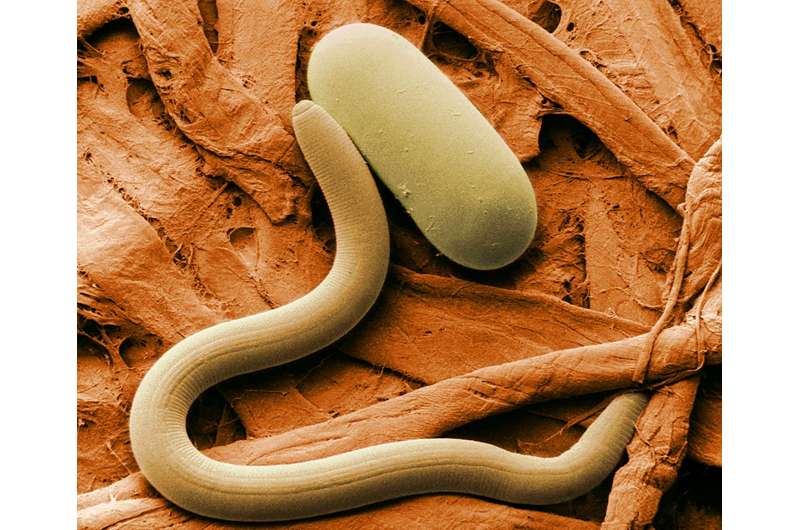Nematode resistance in soybeans beneficial even at low rates of infestation

Each spring, tiny roundworms hatch and wriggle over to the nearest soybean root to feed. Before farmers are even aware of the belowground infestation, the soybean cyst nematode silently begins to wreak havoc on soybean yield.
Fortunately, breeders have identified soybean varieties with genetic resistance to the nematodes and have used them to create new resistant varieties. As you might expect, resistant varieties yield more than susceptible ones when SCN is in the soil. But, until now, it wasn't clear whether that yield advantage held up at low SCN infestation rates.
"The University of Illinois has been organizing a regional testing program of university-developed experimental soybean lines through funding from the United Soybean Board. In the last decade, we have collected data on agronomic performance, including yield, but also data on the resistance of the lines as well as on SCN pressure in the field. We've built up a massive dataset from these tests," says University of Illinois soybean breeder Brian Diers.
By looking at 11 years of data from 408 sites around the Midwest, the researchers found that there was a yield advantage for SCN resistance even at low infestation levels—as low as 20 eggs per 100 cubic centimeters of soil. In environments with no SCN infestation, the team saw evidence of yield drag, where resistant varieties yielded slightly less than susceptible ones.
"But most fields in the Midwest do have at least some infestation," Diers says. "So, in most cases, there's little justification in planting susceptible varieties to avoid that potential yield drag."
The most common source of SCN resistance is from a soybean accession known as PI 88788. It is well known that SCN is increasing in its ability to overcome 88788-resistance throughout the Midwest. The researchers wanted to find out if varieties with 88788-resistance are still able to produce high yields despite mounting pressure from nematodes.
Using the same large dataset, the researchers found that those varieties still provide at least enough moderate resistance to produce good yields. "For me, it's a message to the soybean community that the sky hasn't fallen, that 88788-resistance is, on average, working well in most fields," Diers says.
Diers cautions that other sources of resistance, such as Peking or 437654, are better choices in fields where SCN is able to overcome 88788-resistance at a high level. However, he also notes that those varieties are harder to find.
"Farmers should rotate soybeans with a non-host crop such as corn, and also, if possible, with soybean varieties that have SCN resistance from alternative sources," Diers suggests.
The article, "Impact of soybean cyst nematode resistance on soybean yield," is published in Crop Science. The research was supported by the United Soybean Board.
More information: Crop Science, DOI: 10.2135/cropsci2016.07.0628
Provided by University of Illinois at Urbana-Champaign


















